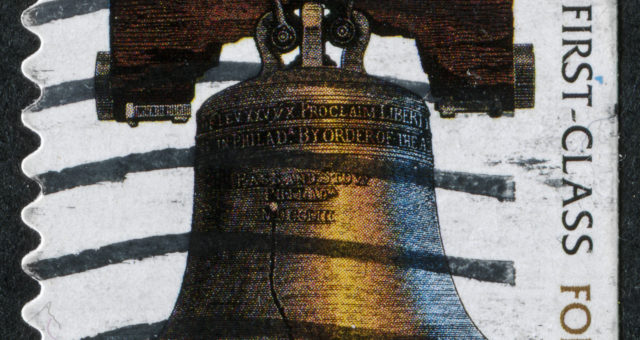
Here’s Why the 2019 Postage Increase is Not All Bad News
On January 27, 2019, the cost of postage for a one-ounce letter went up five cents; from 50 cents to 55 cents.
What can you get for a nickel these days? Nothing. It’s so insignificant that some of us may think twice before bending down to pick one up off the street. It’s the kind of thing you hear jingling around in the dryer because you forgot to clear your pockets before laundry day. The postage increase was not even the price of a pack of gum; but multiplied hundreds or even thousands of times for businesses that use direct mail to fulfill various needs, these cents can add up.
The 5-cent increase was the most substantial postage increase since 1991 when it went up 4 cents; from 25 to 29 cents. The 2019 postage increase is an attempt of the United States Postal Service to recover several billion dollars in losses suffered from the declining use of mail over the last 12 years.
Decrease in Postage Costs
While not-so-great news for those sending light-weight correspondences, postage costs decreased on each additional ounce thereafter. The postage decrease, in this case, went from 21 cents on each extra ounce to 15 cents.
To give you an idea, the weight of a standard wedding invitation is typically two ounces, just an FYI for the bride and grooms of 2019 now gearing up to save a cent on each invite; down from 71 cents to 70.
It may not seem like much, but every penny truly does count in large mailings.
The ounce-by-ounce decrease was also good news for any businesses shipping weighty packages via USPS. If years of consumerism have taught us anything, it’s you’ve got to spend more to save more, and the United States Postal Service is of no exception.
Postcards Stay the Same
In the case of postcards that do not require an envelope, the postage cost remained at 35 cents apiece in the United States and $1.15 for international.
Additional Postage Increases
The cost of priority mail also increased with small boxes (half a pound), beginning at a 70-cent increase and priority express mail at a 72-cent increase for padded envelopes of the same size.
Additional Postage Decreases
Heavy-weight boxes saw a decrease overall, as did medium-weight packages in zone 5 and higher; the postal zones signifying how far a distance a parcel has to travel.
Breakdown of Postage Costs
Increase:
- 1-ounce mail ($0.50 to $0.55)
- Priority mail – box (starting at a $0.70 increase)
- Priority mail – envelope ($0.65, $0.75 for padded)
- Letters – 1 oz. metered ($0.47 to $0.50)
Decrease:
- Each additional ounce – letters ($0.21 to $0.15)
- Medium weight boxes – 4 lbs. to 10 lbs. (decrease on zones 5 and higher with savings from $0.17 to $0.63)
- Heavy-weight boxes – 11 lbs. to 70 lbs. (zone-based savings from $0.11 to $1.37)
Same:
- US Postcards ($0.35)
- International Postcards ($1.15)
- International Letters ($1.15)
What Can & Should Businesses Do?
What should businesses do about rising postage costs? For companies that rely on print advertising and paper correspondences to sustain their livelihood, this isn’t the end of direct mail. If your customer-base expects direct mail, and if the research shows just how vital it is for enticing prospects in your industry, you just need to be diligent in making every penny count.
Be conscious of the weight and dimensions of your mailings to limit the postage impact. Be more attentive to your mailing lists, making sure your addresses are correct and updated when needed. In cases where it makes sense, you can even use postcards to take advantage of the unchanged rates. There is even mail managing software available, like cloud-based SendPro and the like, to help you organize lists, process, and ship from the office.
Maximize your time and dollars by working smarter not harder. Plus, with the ever-steady decline in physical mailings, quality, direct mail advertisements from your company have a better chance of standing out.
Greeting Cards
For direct-mail-based businesses like greeting card companies, there are still three niche areas excelling. While drug stores may be removing mid-priced greeting cards from their rows bit by bit, discount greeting cards still hold a place in people’s hearts. On the opposing end, high-priced greeting cards like the ones found at Papyrus have become a bit hit, especially with millennials.
Some consumers may have gone to digital means of well-wishing, but the tradition of greeting cards at their most warranted occasions remains very much alive.
The last avenue still finding success in the greeting card world during these troubled times is personalized greeting card businesses. Successful e-commerce businesses offer custom greeting cards that B2B and B2C consumers can add a message to, a logo, company name, photographs, and more. Customers can purchase one custom card or shop in bulk for a greater discount with a focus on providing a more tailored experience when speaking to recipients.
The Good News
Even with physical mail’s steady decline, many studies show that print advertising is still the most trusted source in the industry; some useful information can be found in this article: 11 Scientifically-Proven Tips for Promoting Your Business with Print Advertising.
Use the decline in physical mail to your advantage. With most companies taking to digital forms of advertising, it’s easy for your ads to get lost in the blue din of laptop screens and mobile phones; print mail still promises a chance at a more uninterrupted and memorable
